Bait Making in the 90s
Bill Cottam and Gary Bayes reflect on what life as a bait-maker was really like in the 1990s, from the rivalry between firms to baiting teams and marketing
CARPOLOGY: What was the bait industry like in the nineties? How competitive or friendly was it, and how many companies were there then, compared to today?
BILL COTTAM: “I look back at the nineties with great fondness; I think it was a good time to be selling bait. For sure it was competitive, but we all seemed to have our own piece of the market and we all just got on with it without worrying too much about what our competitors were doing. I do get the impression that there are a few bait companies out there these days, who spend far too much time worrying about what other people are doing rather than concentrating on their own brand. I used to hear talk of bait companies squabbling at that time, but to be honest we never got involved in any of it; I have always believed that being based in the frozen North - away from the traditional carp bait hotbeds - was a huge advantage for Nutrabaits. We just concentrated on supplying the best bait we could possibly produce and let everybody else get on with what they were doing.”
GARY BAYES: “Whatever rumours were banded about at the time, I was never involved in anything other than friendly rivalry. I did hear that so-and-so was slagging so-and-so off and yes, some was directed at Nashbait, but so what. Perhaps with social media as it is today, it might’ve been more interesting, but generally, everyone in the industry just got on with their own business.
“At the time I used to fish over Christmas and had dinners brought over to the lake by several people, including Kevin Nash, Steve Morgan and other anglers fishing for different bait companies - if there is such a thing as fishing for a bait company. I remember Steve Morgan taking over my perch rods at the Manor while I ate the lovely Christmas dinner he’d delivered. Fishing on Christmas Day was wicked… no bailiffs, so as many rods as you could carry!”
CARPOLOGY: How many companies were there back then when compared to today?
BILL COTTAM: “There are certainly many more today and much more money being chucked at promotion and marketing. Overseas bait companies were few and far between in the nineties and although each country we exported to had its own brands, it was nothing like it is today. These days virtually every country you care to mention has numerous resident bait brands.
“Another big difference today of course, is the emergence of the dozens of so-called ‘Fred in the shed’ bait suppliers. I am not being critical - as Nutrabaits began life in my parent’s garage in 1986 - but the fact that many of them trade with relatively low overheads is undoubtedly a source of frustration to many of the more established brands who carry staff throughout the year and who are subject to the dreaded VAT and everything else that goes part and parcel with running a sizable business.”
CARPOLOGY: How much bigger do you believe the bait market is now compared to the early to mid-90s?
GARY BAYES: “The bait market is huge now compared to then. There are a lot more ‘Manors’ in Essex than there were, all getting heavily boilie-fished. I’m sure there are more up and down the country too. Nashbait has never been able to keep up with the demand for boilies and we still struggle, even with the hundreds of kilos more we’re able to produce each week now.”
BILL COTTAM: “It’s difficult to say, but there is no doubt more bait is being sold globally these days than at any time in the past; the problem of course is that the huge number of bait companies who are plying their trade around the world serves to dilute the market somewhat.”
CARPOLOGY: How does bait production differ in 2019 to the mid-nineties? Can you remember what your maximum output was per day then, and how does that compare to today?
GARY BAYES: “I reckon we struggled to make 10 tonnes in a good week in the nineties. Now we can easily make 30 tonnes, along with pop-ups, hookbaits etc.”
CARPOLOGY: Who were the ‘big manufacturers’ then - Nashbait, Mainline and Nutrabaits?
BILL COTTAM: “Yeah, and Premier Baits, Streamselect (Richworth), and much missed fella by the name of Hutchinson who used to sell the odd boilie or two out of Lincolnshire. I can’t honestly remember when Dynamite Baits took their first strides into the carp bait market, but they certainly gave us all something to think about when they did.”
CARPOLOGY: How much competition and rivalry was there between manufacturers back then and does it differ greatly to today?
BILL COTTAM: “As I have already mentioned, we always did our very best to keep out of it and although I suspect I was not on all my competitors Christmas card lists at the time, generally speaking I got on with everybody. I’m not sure about today’s marketplace; I hear tales of nastiness and back-biting amongst the various companies, but I have always believed that these things are often caused by sponsored anglers and those loosely associated with the company, rather than the company owner himself. I used to hear numerous tales back in the day about Nutrabaits and Mainline being at war, although in truth, Kev Knight and I knew nothing about it! I now class all the Mainline boys as friends and I am happy to say the same applies to the likes of Nashy, Martin Locke, Allan Parberry, Mike Willmott and several other bait gurus (whatever that means). Surely life is too short to fall out with people over a few boilies?!
GARY BAYES: “Every manufacturer thought they had the best bait ever, and all of us did, and still do, produce baits that catch loads of fish. I’ve never thought our successful baits better than other companies’; the nitty gritty if you like, is captures… we all just say our baits are the best!”
CARPOLOGY: The term ‘baiting team’ was commonplace in the 90s, however in 2019 you hardly hear that term. Just how effective - and how much of an advantage - was it being part of a team of anglers all using the same bait?
BILL COTTAM: “I’ve got to be a bit careful here… Carp will eat virtually any foodstuff if you constantly put it under their nose, but good quality baits do not necessarily need everybody and there dog to be using them to render them effective. The consequence of this is that some bait companies try to get teams of anglers piling the same bait in to ensure plenty of fish get caught on their products. A quality bait - and there are plenty around the days - will stand on its own feet and when applied sensibly should hold its own against anything else.”
CARPOLOGY: Bill, tell us about Club Nutrabaits - who’s idea was it, how successful was it, how many years did it run for, and why and when did you finally close it down?
BILL COTTAM: “Don’t mention Club Nutrabaits to my better half! In the nineties there was a huge thirst for information about Nutrabaits, the brand and the people involved with it, and with that in mind I came up with the idea of Club Nutrabaits. Basically for the princely sum of two-earth-pound a year we supplied quarterly newsletters, advance new product information, product samples, access to exclusive fact sheets and clothing and discount on our products from participating stockists. Thinking we might amass a few dozen members, I asked the missus if she would look after the membership and mail-outs… We had over 3,000 members in the first six weeks!
“I forget how long Club Nutrabaits ran for, but the ever increasing price of paper, print and postage meant that the only realistic option was to move to online newsletters - which we did for several years - but even though it enabled us to grow the numbers, it never quite felt the same and the eventual growth of Facebook and other social media platforms eventually put the final nail in the Club Nutrabaits coffin.
“Membership peaked at somewhere between six and seven thousand, which prompted one of The Carp Society head honchos to tell me we had the biggest single species group in Europe on our hands; I don’t know about that, and it is hardly a fair comparison when you consider that we were only charging a couple of quid for membership - but I think Club Nutrabaits did okay.”
CARPOLOGY: Nutrabaits sponsored a lot of big names in the 90s - can you run through who used the bait back then?
BILL COTTAM: “I am happy to say that I can’t name everybody who used Nutrabaits in the nineties! I always put a huge importance on our group of sponsored angers and field-testers and I will forever be grateful to those who supported the brand throughout my time in charge… I was enormously proud of the team who represented us and the nineties was certainly a good period as far as our band of merry men was concerned.
“To name but a few, we looked after: Tim Paisley, Julian Cundiff, Ken Townley, Brian Skoyles, Bernard Sisson, Graham Slater, Russ Widgington, Dave Mallin, Del Smith, Dave Moore, Joe Easton, Matt Hayes, Kev Green, Jim Shelley, Brian Garner, John Lilley, Paddy Webb, Dave Compstone, Mark Pidgely, Phil Cousins, Rick Clements, Derek Harrison, Raf Van Opstal, Roberto Ripamonti, Sandro Di Cesare, Philippe Lagabbe and the list went on…”
CARPOLOGY: How much thought and money went into marketing in the 90s - and how do you think that differs in 2019?
GARY BAYES: “There was a lot of original thought going into marketing in the nineties; some of Lockie’s ads made you look twice and most were different. I don’t look at ads now, so can’t comment on the new ones. It’s the same with packaging etc.; it’s all ‘sameness’ in my opinion now, mostly too flashy. I liked our all-blue packaging… someone would catch a fish on the far bank, sort it out, cast out and then get a blue bag out and put some more freebies in. They were on Nashbait; now you can’t see that.”
BILL COTTAM: “The lion’s share of our marketing used to be based around promoting the huge number of captures being reported on Nutrabaits products and the quality of the products we were supplying. Our openness with regard to listing the ingredients used in the production of our baits was always a big deal with the guys who had a real interest in bait and as a consequence we got a lot of them onboard.
“We also produced a hundred-page-plus full colour catalogue each year that went by the rather imaginative title of ‘Bait’. It was an expensive and very time-consuming project, but thankfully the advertising space we were able to sell coupled with the cover price rendered it virtually self-financing.
“It is a trait I hate, but I have to be honest and say that I was maybe a little arrogant as far as the future Nutrabaits was concerned; I knew we had terrific products, a great global reputation and a workforce who could cope with the demand and - in me - somebody who was capable of communicating reasonably well with our customer base via the written word; as a consequence I thought our success would go on forever…
“What I didn’t see coming was the arrival in the marketplace of a couple of companies who had seemingly bottomless pits of money to throw at marketing and promotion! I have no monetary complaints about my time at Nutrabaits, but at the end of the day, I was a fella from Rotherham… I couldn’t compete!”
CARPOLOGY: Gary, what was Nashbait’s biggest bait in the mid- to late-nineties?
GARY BAYES: “We had two: Sting Fish Mix and then Scopex Squid - which is still going strong today. We had to stop the Sting Fish Mix due to changes in regulation. That led to the Scopex Squid being developed with ingredients that are unlikely to be affected.”
CARPOLOGY: Talk us through the era of the ball pellet; when did they first appear and can you remember whose idea they were?
GARY BAYES: “Not a lot to say really… they were good and I liked using them, but they were a bought-in product and the supplier stopped making them."
CARPOLOGY: What was the thinking behind them and what made them so effective?
GARY BAYES: “They worked in a similar way to pellets: they broke down steadily and attraction leached to attract the carp. It then took longer for the fish to clear them up, so they were in the swim longer - a bit like a bed of smaller pellet or hemp. I used to soak food liquids into them and that worked really well. The biggest advantage they had over pellet was that they could be catapulted further, or put out with a throwing sick, and you could feed a bigger area too. They were very good and it’s a shame they’re not about anymore.”
CARPOLOGY: Why did you, and many other manufacturers stop producing them?
GARY BAYES: “They were always bought in; the supplier did his best, but it wasn’t to be and production finally stopped.”
CARPOLOGY: Whatever happened to Nashbait Micromass? For our younger readers, perhaps you can explain what the product was and how it worked…
GARY BAYES: “They were originally made as soft hookbaits for the match angler, but with a few ingredients tweaked. They were a really good carpet feed-type bait. Funnily enough, I was only talking to someone the other day who remembered catching loads of fish from an otherwise very tricky lake; he really wanted to get his hands on some more for where he’s fishing now.”
CARPOLOGY: Why did you stop producing it?
GARY BAYES: “The same thing happened with the Micromass as the ball pellets… same supplier.”
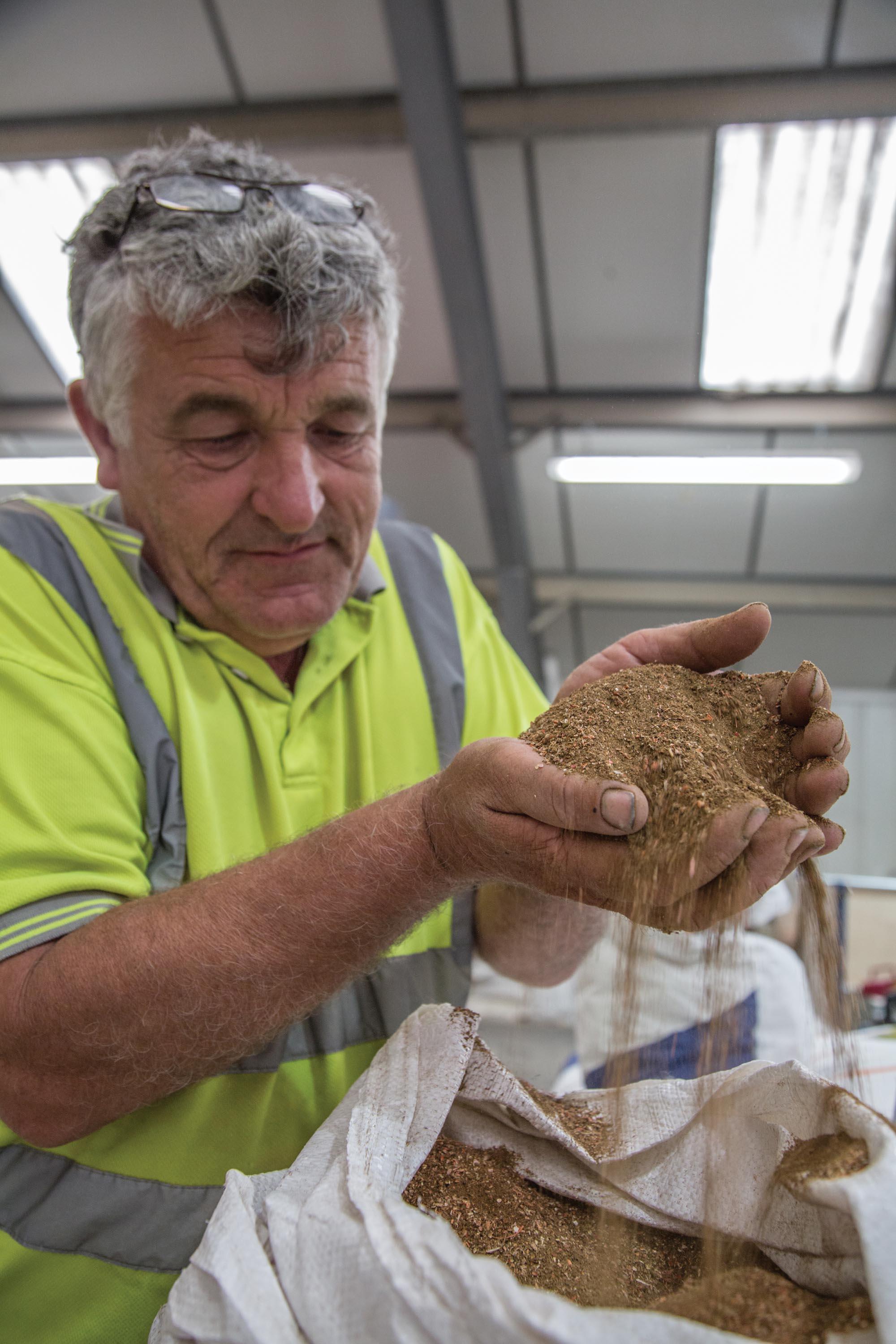
CARPOLOGY: How does bait production differ in 2019 to the mid-nineties? Can you remember what your maximum output was per day then, and how does that compare to today?
GARY BAYES: “I reckon we struggled to make 10 tonnes in a good week in the nineties. Now we can easily make 30 tonnes, along with pop-ups, hookbaits etc.”
CARPOLOGY: Who were the ‘big manufacturers’ then - Nashbait, Mainline and Nutrabaits?
BILL COTTAM: “Yeah, and Premier Baits, Streamselect (Richworth), and much missed fella by the name of Hutchinson who used to sell the odd boilie or two out of Lincolnshire. I can’t honestly remember when Dynamite Baits took their first strides into the carp bait market, but they certainly gave us all something to think about when they did.”
CARPOLOGY: How much competition and rivalry was there between manufacturers back then and does it differ greatly to today?
BILL COTTAM: “As I have already mentioned, we always did our very best to keep out of it and although I suspect I was not on all my competitors Christmas card lists at the time, generally speaking I got on with everybody. I’m not sure about today’s marketplace; I hear tales of nastiness and back-biting amongst the various companies, but I have always believed that these things are often caused by sponsored anglers and those loosely associated with the company, rather than the company owner himself. I used to hear numerous tales back in the day about Nutrabaits and Mainline being at war, although in truth, Kev Knight and I knew nothing about it! I now class all the Mainline boys as friends and I am happy to say the same applies to the likes of Nashy, Martin Locke, Allan Parberry, Mike Willmott and several other bait gurus (whatever that means). Surely life is too short to fall out with people over a few boilies?!
GARY BAYES: “Every manufacturer thought they had the best bait ever, and all of us did, and still do, produce baits that catch loads of fish. I’ve never thought our successful baits better than other companies’; the nitty gritty if you like, is captures… we all just say our baits are the best!”
CARPOLOGY: The term ‘baiting team’ was commonplace in the 90s, however in 2019 you hardly hear that term. Just how effective - and how much of an advantage - was it being part of a team of anglers all using the same bait?
BILL COTTAM: “I’ve got to be a bit careful here… Carp will eat virtually any foodstuff if you constantly put it under their nose, but good quality baits do not necessarily need everybody and there dog to be using them to render them effective. The consequence of this is that some bait companies try to get teams of anglers piling the same bait in to ensure plenty of fish get caught on their products. A quality bait - and there are plenty around the days - will stand on its own feet and when applied sensibly should hold its own against anything else.”
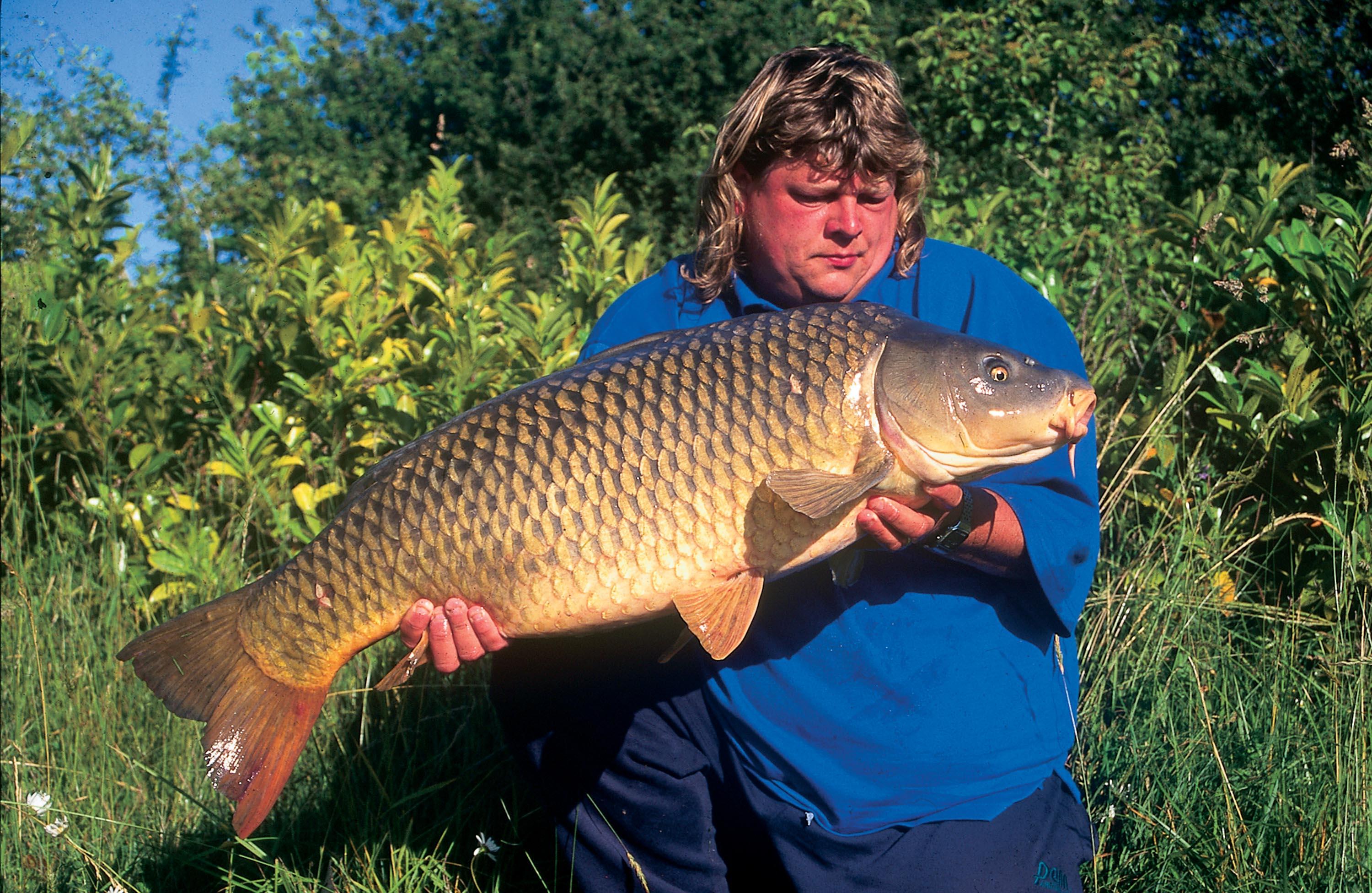
CARPOLOGY: Bill, tell us about Club Nutrabaits - who’s idea was it, how successful was it, how many years did it run for, and why and when did you finally close it down?
BILL COTTAM: “Don’t mention Club Nutrabaits to my better half! In the nineties there was a huge thirst for information about Nutrabaits, the brand and the people involved with it, and with that in mind I came up with the idea of Club Nutrabaits. Basically for the princely sum of two-earth-pound a year we supplied quarterly newsletters, advance new product information, product samples, access to exclusive fact sheets and clothing and discount on our products from participating stockists. Thinking we might amass a few dozen members, I asked the missus if she would look after the membership and mail-outs… We had over 3,000 members in the first six weeks!
“I forget how long Club Nutrabaits ran for, but the ever increasing price of paper, print and postage meant that the only realistic option was to move to online newsletters - which we did for several years - but even though it enabled us to grow the numbers, it never quite felt the same and the eventual growth of Facebook and other social media platforms eventually put the final nail in the Club Nutrabaits coffin.
“Membership peaked at somewhere between six and seven thousand, which prompted one of The Carp Society head honchos to tell me we had the biggest single species group in Europe on our hands; I don’t know about that, and it is hardly a fair comparison when you consider that we were only charging a couple of quid for membership - but I think Club Nutrabaits did okay.”
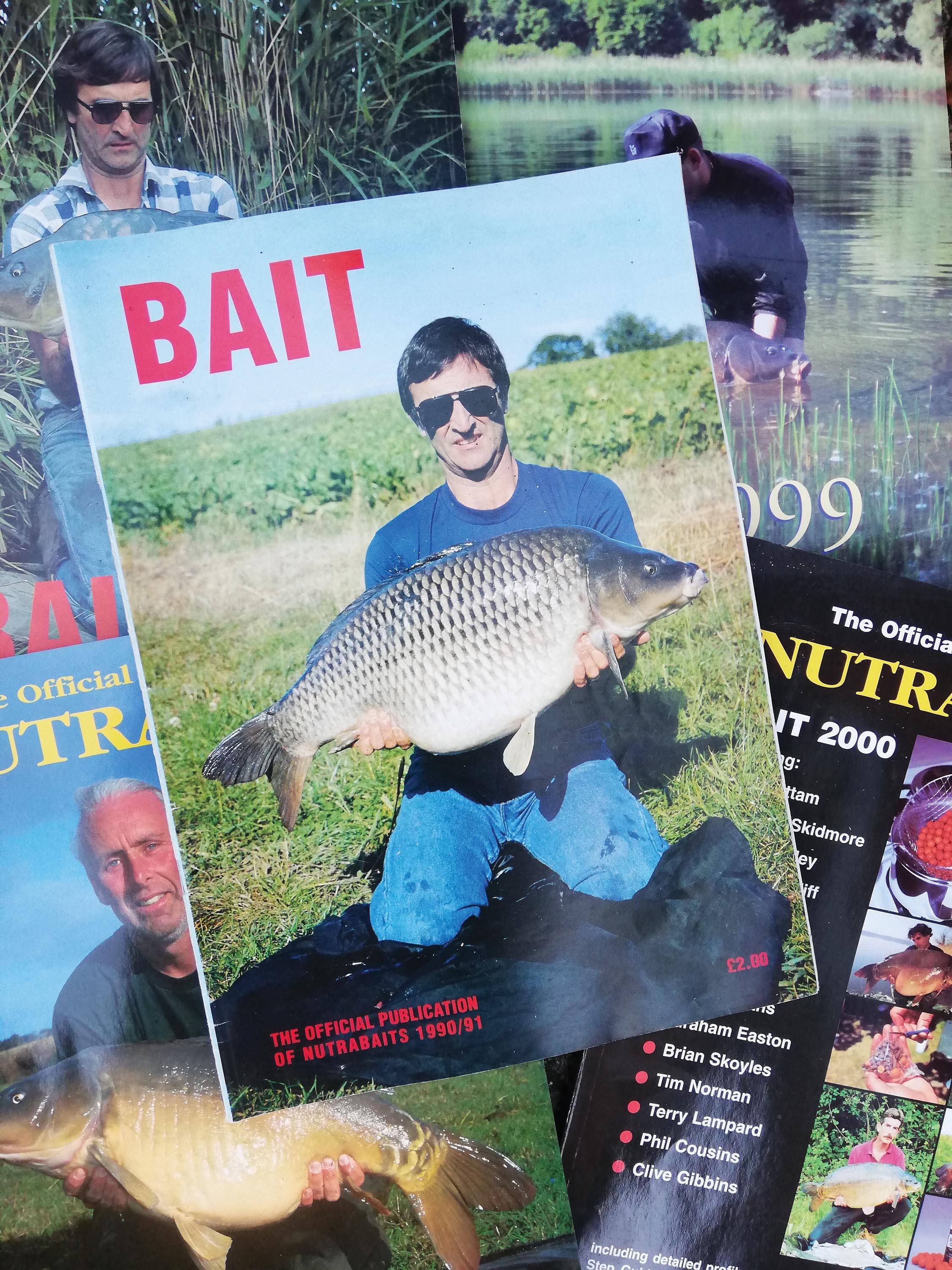
CARPOLOGY: Nutrabaits sponsored a lot of big names in the 90s - can you run through who used the bait back then?
BILL COTTAM: “I am happy to say that I can’t name everybody who used Nutrabaits in the nineties! I always put a huge importance on our group of sponsored angers and field-testers and I will forever be grateful to those who supported the brand throughout my time in charge… I was enormously proud of the team who represented us and the nineties was certainly a good period as far as our band of merry men was concerned.
“To name but a few, we looked after: Tim Paisley, Julian Cundiff, Ken Townley, Brian Skoyles, Bernard Sisson, Graham Slater, Russ Widgington, Dave Mallin, Del Smith, Dave Moore, Joe Easton, Matt Hayes, Kev Green, Jim Shelley, Brian Garner, John Lilley, Paddy Webb, Dave Compstone, Mark Pidgely, Phil Cousins, Rick Clements, Derek Harrison, Raf Van Opstal, Roberto Ripamonti, Sandro Di Cesare, Philippe Lagabbe and the list went on…”
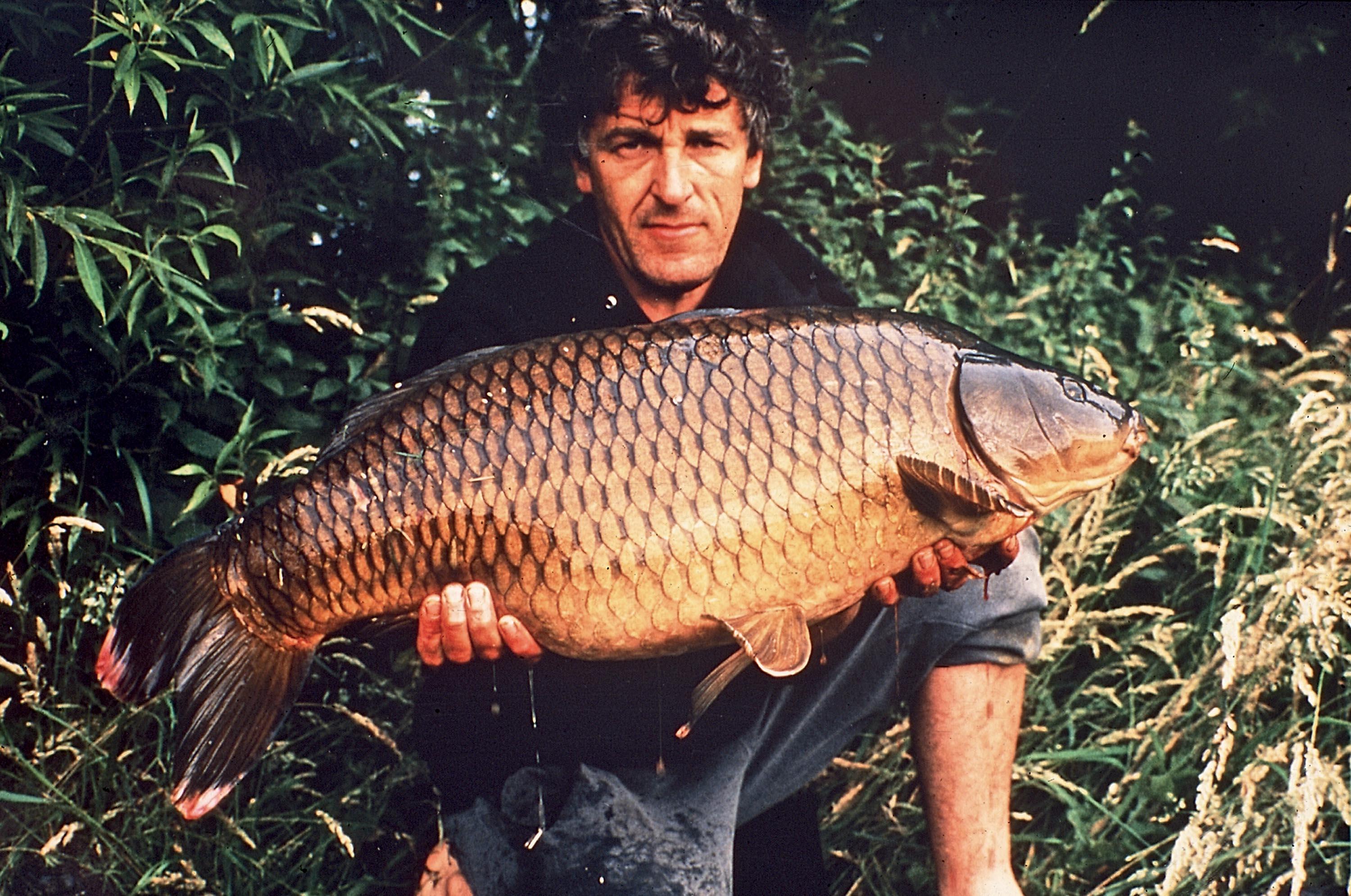
CARPOLOGY: How much thought and money went into marketing in the 90s - and how do you think that differs in 2019?
GARY BAYES: “There was a lot of original thought going into marketing in the nineties; some of Lockie’s ads made you look twice and most were different. I don’t look at ads now, so can’t comment on the new ones. It’s the same with packaging etc.; it’s all ‘sameness’ in my opinion now, mostly too flashy. I liked our all-blue packaging… someone would catch a fish on the far bank, sort it out, cast out and then get a blue bag out and put some more freebies in. They were on Nashbait; now you can’t see that.”
BILL COTTAM: “The lion’s share of our marketing used to be based around promoting the huge number of captures being reported on Nutrabaits products and the quality of the products we were supplying. Our openness with regard to listing the ingredients used in the production of our baits was always a big deal with the guys who had a real interest in bait and as a consequence we got a lot of them onboard.
“We also produced a hundred-page-plus full colour catalogue each year that went by the rather imaginative title of ‘Bait’. It was an expensive and very time-consuming project, but thankfully the advertising space we were able to sell coupled with the cover price rendered it virtually self-financing.
“It is a trait I hate, but I have to be honest and say that I was maybe a little arrogant as far as the future Nutrabaits was concerned; I knew we had terrific products, a great global reputation and a workforce who could cope with the demand and - in me - somebody who was capable of communicating reasonably well with our customer base via the written word; as a consequence I thought our success would go on forever…
“What I didn’t see coming was the arrival in the marketplace of a couple of companies who had seemingly bottomless pits of money to throw at marketing and promotion! I have no monetary complaints about my time at Nutrabaits, but at the end of the day, I was a fella from Rotherham… I couldn’t compete!”
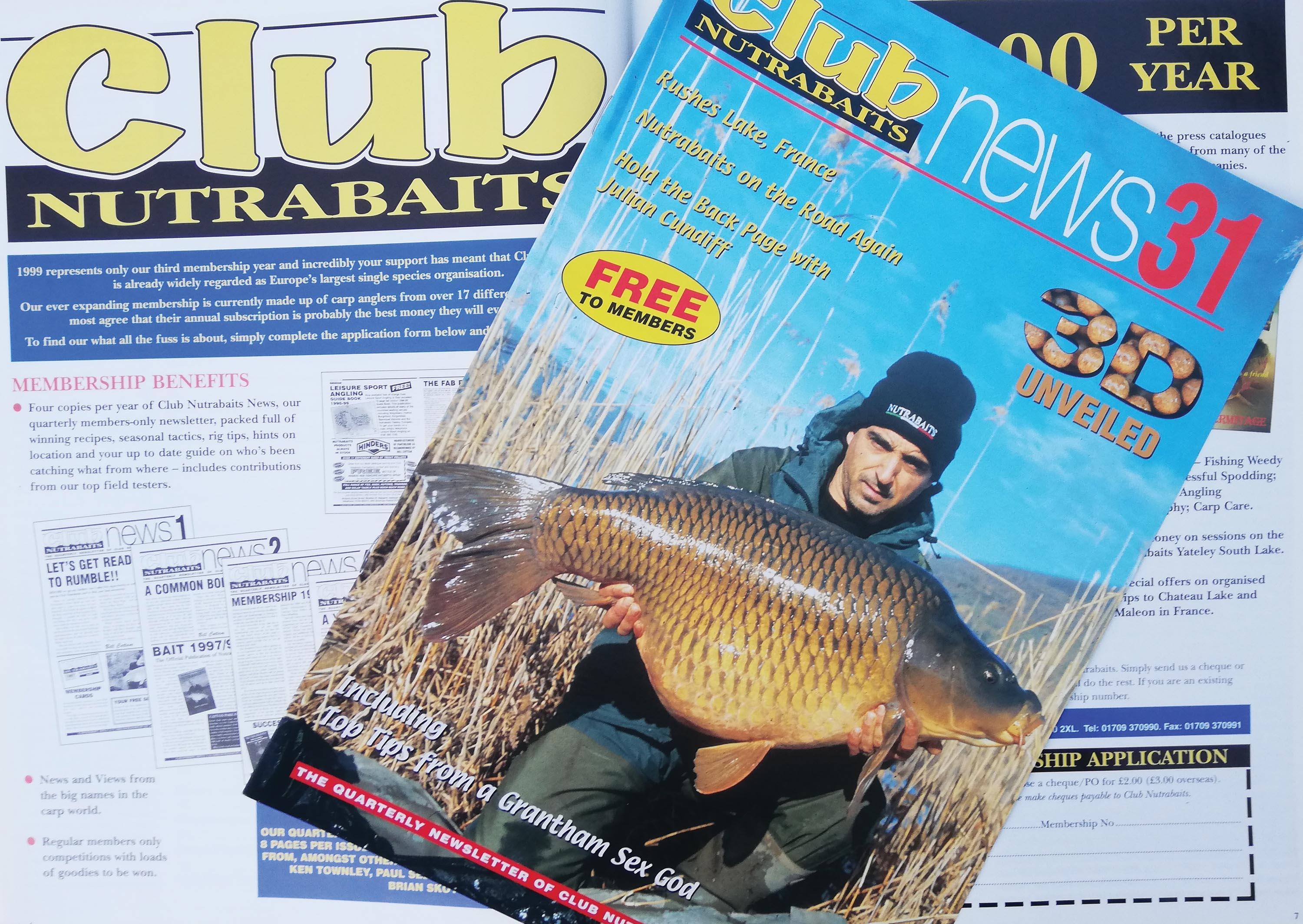
CARPOLOGY: Gary, what was Nashbait’s biggest bait in the mid- to late-nineties?
GARY BAYES: “We had two: Sting Fish Mix and then Scopex Squid - which is still going strong today. We had to stop the Sting Fish Mix due to changes in regulation. That led to the Scopex Squid being developed with ingredients that are unlikely to be affected.”
CARPOLOGY: Talk us through the era of the ball pellet; when did they first appear and can you remember whose idea they were?
GARY BAYES: “Not a lot to say really… they were good and I liked using them, but they were a bought-in product and the supplier stopped making them.”
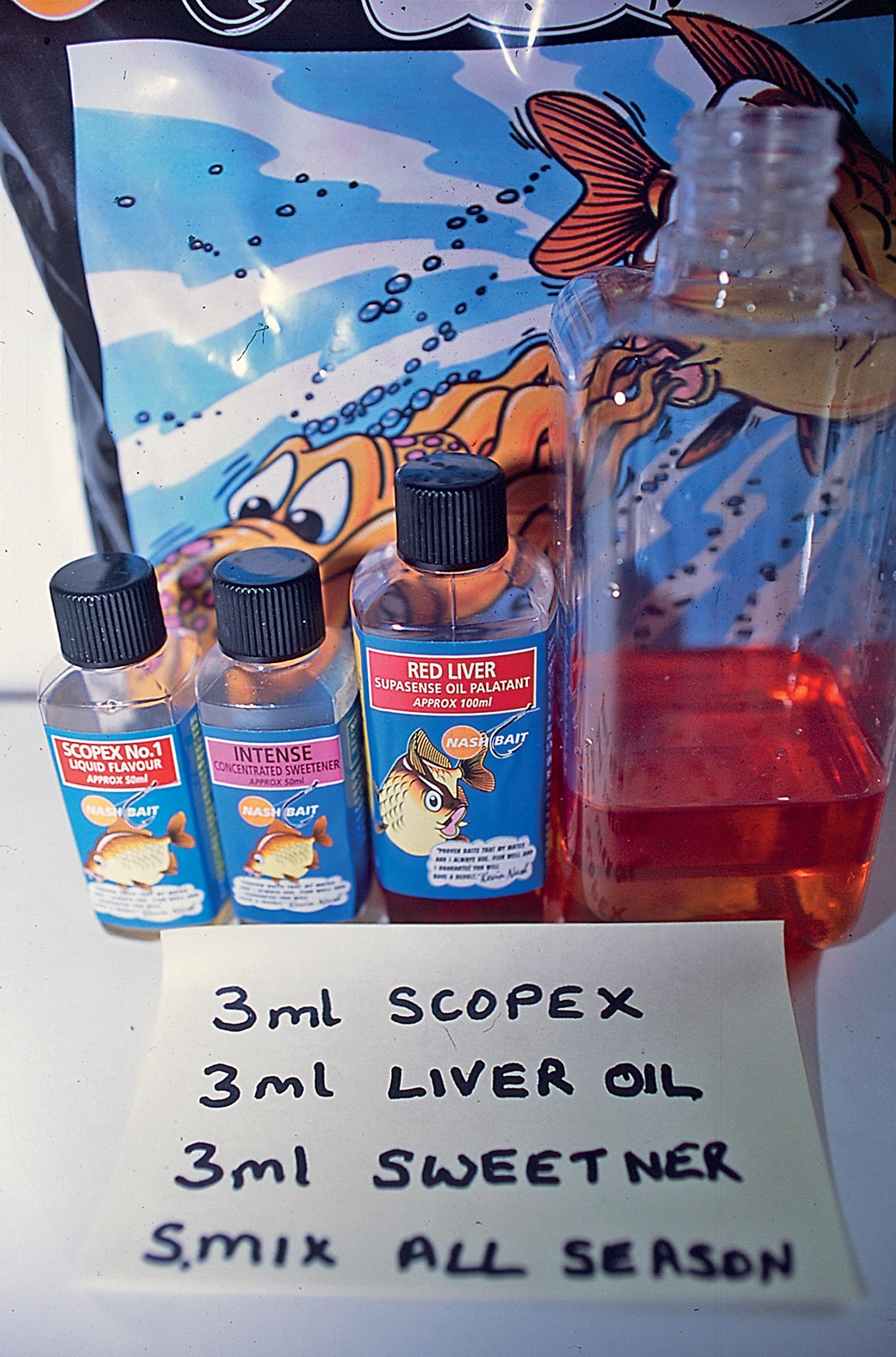
CARPOLOGY: What was the thinking behind them and what made them so effective?
GARY BAYES: “They worked in a similar way to pellets: they broke down steadily and attraction leached to attract the carp. It then took longer for the fish to clear them up, so they were in the swim longer - a bit like a bed of smaller pellet or hemp. I used to soak food liquids into them and that worked really well. The biggest advantage they had over pellet was that they could be catapulted further, or put out with a throwing sick, and you could feed a bigger area too. They were very good and it’s a shame they’re not about anymore.”
CARPOLOGY: Why did you, and many other manufacturers stop producing them?
GARY BAYES: “They were always bought in; the supplier did his best, but it wasn’t to be and production finally stopped.”
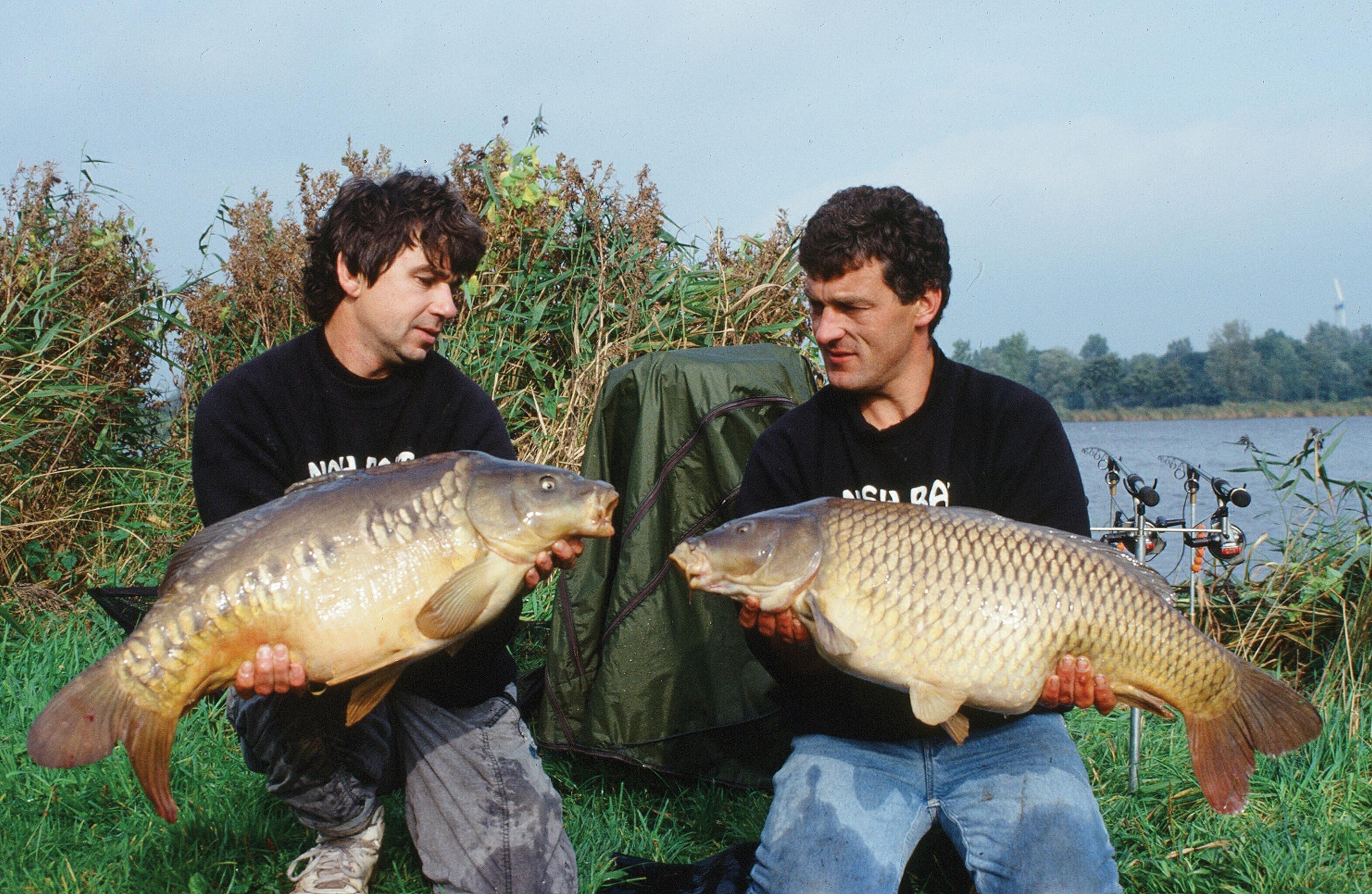
CARPOLOGY: Whatever happened to Nashbait Micromass? For our younger readers, perhaps you can explain what the product was and how it worked…
GARY BAYES: “They were originally made as soft hookbaits for the match angler, but with a few ingredients tweaked. They were a really good carpet feed-type bait. Funnily enough, I was only talking to someone the other day who remembered catching loads of fish from an otherwise very tricky lake; he really wanted to get his hands on some more for where he’s fishing now.”
CARPOLOGY: Why did you stop producing it?
GARY BAYES: “The same thing happened with the Micromass as the ball pellets… same supplier.”




